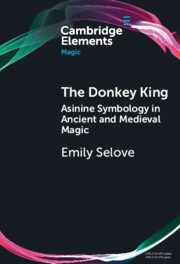Element contents
The Donkey King
Published online by Cambridge University Press: 24 November 2023
Summary
Information
- Type
- Element
- Information
- Series: Elements in MagicOnline ISBN: 9781009076234Publisher: Cambridge University PressPrint publication: 21 December 2023
Bibliography
Accessibility standard: Unknown
Why this information is here
This section outlines the accessibility features of this content - including support for screen readers, full keyboard navigation and high-contrast display options. This may not be relevant for you.Accessibility Information
- 6
- Cited by
